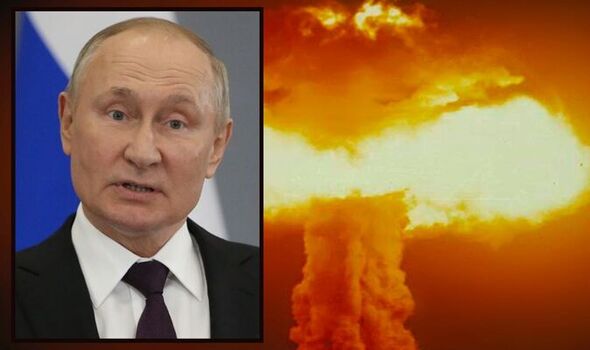
Amidst heightened tensions in the ongoing Ukraine conflict, Vladimir Putin’s recent deployment of a nuclear fleet to Europe’s doorstep has sparked concerns of escalating hostilities. The Kremlin’s move involved positioning a fleet of 11 nuclear-capable jets, including strategic bombers like the TU-160 ‘Blackjack’ and TU-95 ‘Bear’ hydrogen bomb carriers, at the Olenya airbase near the Finland and Norway borders in the Arctic Circle.
These strategic bombers, capable of launching both long and short-range weapons, were detected through satellite imagery, raising alarms among Israeli intelligence officials. Notably, just a few weeks prior, no such bombers were observed at the base, indicating a swift and deliberate deployment by Russian forces.
The proximity of these nuclear-capable aircraft to Finland, which is in the process of joining NATO, and Norway, an existing NATO member, adds a layer of geopolitical tension to the situation. This move by Putin comes at a time when Russia has faced significant setbacks in the conflict with Ukraine.
Recent reports from the Institute for the Study of War (ISW) suggest that Ukraine’s army has successfully retaken over 6,000 square kilometers of land since the start of September, marking a major operational defeat for Russian forces. Additionally, estimates from the US Defense Department indicate significant casualties among Russian troops, with as many as 80,000 killed or wounded since the invasion began in February.
Putin’s announcement of a “partial mobilization” of Russian troops on September 21 reflects what experts describe as a “sign of pure desperation.” Haish de Bretton-Gordon, a weapons expert, attributes this desperation partly to the effectiveness of training and support provided to the Ukrainian army by British and American forces.
The training and advice offered to the Ukrainian military over the years have proven to be effective, leading to significant gains on the battlefield. The mobilization of Russian troops, coupled with mounting casualties and territorial losses, underscores the precarious position faced by Putin and his government.
As tensions continue to escalate and the conflict evolves, the deployment of nuclear-capable aircraft near NATO borders serves as a stark reminder of the potential ramifications of the ongoing crisis in Ukraine. The delicate balance of power in the region hangs in the balance as global powers navigate the complexities of geopolitical dynamics and military strategy.
RELATED ARTICLES
- After Fooling the People to Reelect Putin, Russia now announces More Cannon Fodder Mobilizations
- Russia Fires Barrage of North Korean Missiles at Kyiv After US Visit
- Ex-Wagner fighters Join Free Russia Army's Battle to Liberate Russia from Putin Occupation
- Hungary Becomes First EU Country to Congratulate Putin for Winning the 'Elections'
- Putin says NATO Troops are already in Ukraine But Russia is Still Winning











